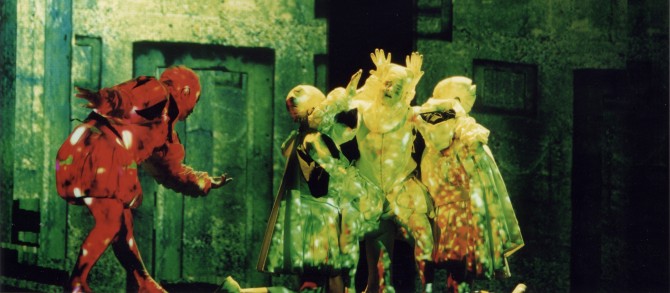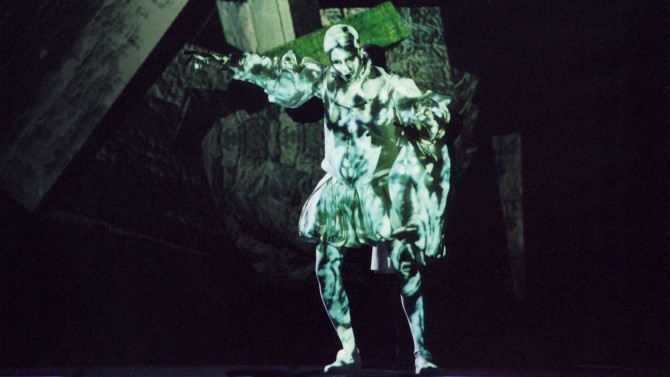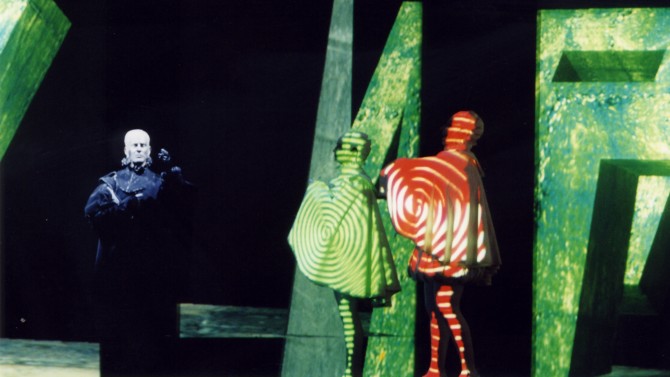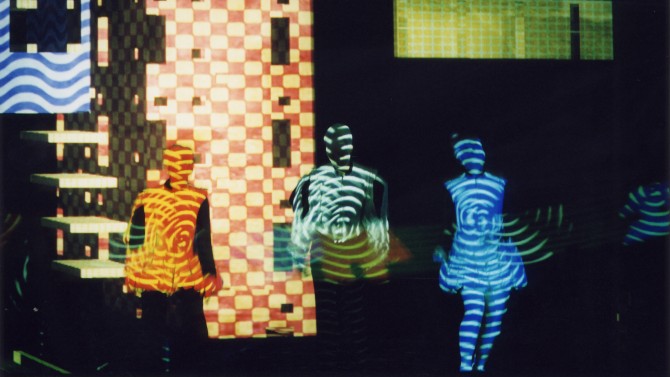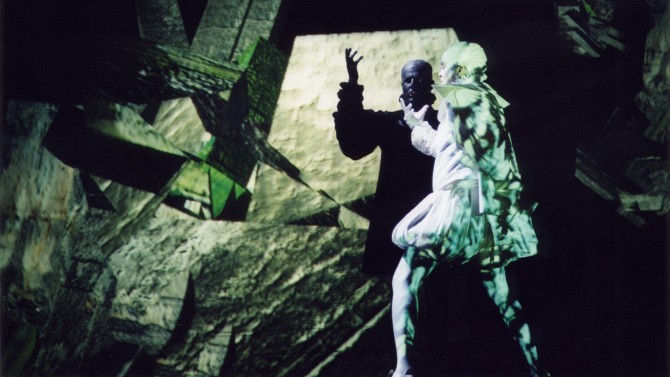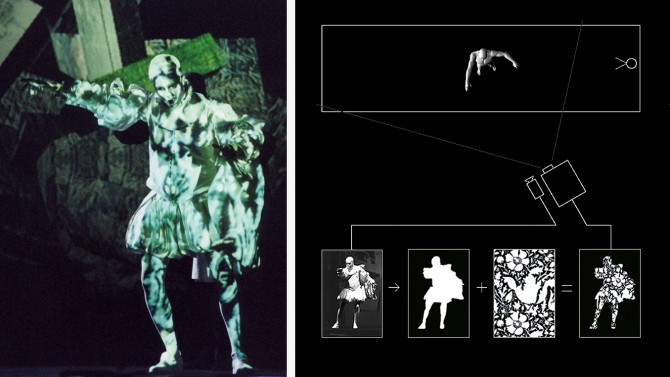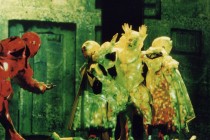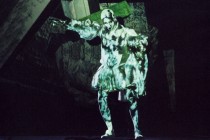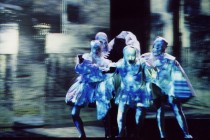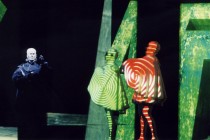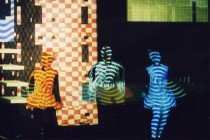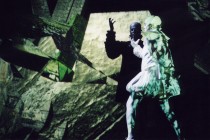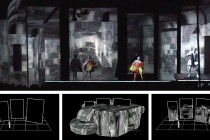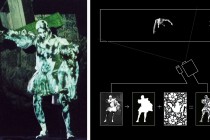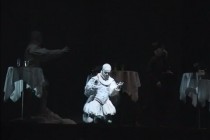Virtual Set Design “The Jew of Malta”, 2002
Opera Biennale Munich, Germany
The set design for the opera The Jew of Malta extends the opera stage with the help of new media to become an active part rather than simply the scene of the action. Based on the play by Christopher Marlowe, a contemporary of Shakespeare’s, the libretto explores the conflict between the world’s three great monotheistic religions: Judaism, Christianity, and Islam. Key aspects of the plot inspired the set design: The drama begins with a prologue in which the Italian writer and protagonist Machiavelli ‘creates’ the play. He is practically omnipotent at the beginning of the play and gradually loses his power in the course of it. To illustrate this development, the set was designed as an interactive projection that is initially completely controlled by Machiavelli. As the play progresses, so Machiavelli’s influence of the set fades.
The interactive set resembles a bunker: a modern reworking of the protective but also constricting and confining environment of a monastery — the original setting of the play. To maximize the spatial experience, the bunker was projected onto several large surfaces positioned at different angles on the set. These screens serve as intersecting planes literally cutting through and revealing the virtual bunker that is otherwise invisibly standing on the stage. By dissolving the architectonic volume into several projection sections, a strongly spatial impression was created while keeping the actual architecture of the bunker on a relatively abstract level.
The initially all-powerful Machiavelli interacts with the set through movements and gestures. By moving his arm in a certain manner, he is able to rotate the bunker horizontally or generate new versions of the bunker from which he then selects the one he wanted. When Machiavelli moves across the stage, the audience view of the bunker changes in accordance with his position. In short: Machiavelli literally becomes the central axis of the virtual set.
A central motif in the story is the swaying thoughts and stances of the various actors. To make this more legible in the complex deconstructed narration of the libretto, another layer of media was developed. Using the white costumes of the singers as projection surface, the internal states and belief systems of the characters were visualized directly on their bodies. For example, the influence of one character over another would manifest in the merging of their projected costumes. The costume projections also clarify the balance of power between Machiavelli and the other characters. A specially developed image recognition system identifies the silhouettes of the actors in real time. From these contours, virtual masks are then calculated, textured, and projected onto the actors. The actors are thus able to move about freely as the projected costumes can be continuously adapted to their movements.
The virtual set was developed in close cooperation with composer André Werner while he was still writing the opera. The project was commissioned by the Opera Biennale Munich in 1999 and premiered in 2002. It was a co-production between ART+COM and bureau+staubach, supported by ZKM Karlsruhe. Co-authors and developers: Nils Krueger, Bernd Lintermann, Andre Bernhardt, Jan Schroeder, Andeas Kratky. Music and libretto: André Werner.
